My Fuzzy Warbles }{ Disc Two }{ Terrapin Station
On Sept. 25th, 2012, I heard Furthur play the full Terrapin Station suite at the WaMu Theater in Seattle. As of this writing, that was the last time the suite has been performed intact. So who cares, and why?
Let’s start with the significance of this particular composition for deadheads. At the 2011 IASPM Canada conference in Montreal, musicologist Jacob A. Cohen opened his paper “Harmonic and Geographic Ambiguity in the Grateful Deadʼs ‘Terrapin Station’” with a query that ran something along these lines: why does Terrapin Station occupy such a revered position in the band’s repertoire despite the fact that it has never been a jam vehicle like Dark Star or Playin’ in the Band? Terrapin Station is highly structured with little room for elaborations or improvisation, especially by comparison with these latter songs, which, more often than not, open up to the band’s legendary exploratory adventuring and lead into unpredictable areas. Cohen argues that Terrapin Station functions similarly to the band’s other “big” numbers because it opens up an ambiguous space through peculiar chord progressions that play unconventionally with tension and resolution, and that these merge perfectly with the ambiguity of the descriptions of geographical space within the song’s lyrics. And so the song can open audiences up to the unknown without improvisational exploration. Cohen’s analysis is astute, but by his own admission he leaves out an important aspect of the song’s position in deadhead consciousness, which I raised during the question period: the full suite that appears on the album, released in July 1977, was never performed in its entirety by the Grateful Dead proper. Instead, they would play the first half, and each performance carried with it the possibility that, this time, they might just see it through instead of leaving us hanging. It was this power of expectation that made the song such an enormous presence for me, and ultimately so frustrating in the band’s unwillingness to provide final resolution to the piece.
As it appears on the record, the first version I ever heard, the suite is comprised of seven sections. The first half consists of Lady with a Fan, Terrapin Station, and Terrapin (starting at 0.00, 10.08, and 12.47 on the Seattle version above). On the live recordings that circulate, the combination of these sections have been labeled as, simply, Terrapin Station. While this first half of the suite is a great set-up, the magic for me was always the strange and wonderful world described in At a Siding followed by the unusually virtuoso playing in Terrapin Flyer before they bring it back to the Refrain (starting at 15.06, 17.32 and 22.00 above). Sitting in the interstitial space of Terrapin Transit I would fill with a rush of expectation waiting for the opening melody of At a Siding, with its trademark sliding from note to note to note on Jerry’s fret board that always sent shivers up my spine. Here, where “sullen wings of fortune beat like rain,” the tales of a mysterious storyteller and a “rare and different tune” spun in the first half are put into the context of a musical journey unlike any the band has produced before or since. Listening today the orchestral embellishments and high polish on the album are a bit cheesy, but the spirit of the piece soars, and it stands as anomalous to the justifiable contention that the album versions of Grateful Dead songs never reach the same heights as their live renditions.
When I got into tape trading around the age of 15, the very first thing I wanted to hear was a live Terrapin Station suite, imagining the possibilities of where the ins and outs of the various sections could be embellished, excited about hearing whether or not they could handle the tricky bits in a live setting. The elder deadhead at my high school had a nice tape collection and picked one out for me from the late 80s. The words Terrapin Station on the set list carried a significance from the album that I hadn’t yet learned to read through to the reality of its live iterations. I took it home, found some alone time, got in the right state of mind, put it on, and set about relishing every note of the show. When they arrived at the section labeled Terrapin on the album I was hanging off the interminable repetitions, always greatly extended in live versions, in anticipation of the world that the “Terrapin” chant was about to reveal. And then… the song dissipated before my very ears as Bill and Mickey took over for the requisite mid-set Drumz. I was crushed. What an epic letdown. But in retrospect, that feeling of being left hanging without resolution as they passed into an unstructured portion of the show was a really important part of the power of the song as played live.
Cohen ended his IASPM paper with a quote from Mary Eisenhart describing a performance of Terrapin Station on New Year’s Eve, 1981:
“Picture, if you will, 8,000 people, many still soaking wet, jammed into the Oakland auditorium. Listen to the band blazing, Garcia belting out the lyrics with exceptional fervor, and the rumble. By the time he gets to the ‘Counting stars by candlelight’ line, 8,000 people are roaring along, matching him syllable for syllable through the crickets and cicadas, the end and the beginning, the train putting its breaks on, and the whistle screaming Terrapin. Not one of us has ever laid eyes on Terrapin Station, and we’d be hard pressed to define exactly what it was. But for that moment there was not the slightest doubt that if we listened hard enough, sang loud enough, and just hung in there, we could collectively lift that decrepit hall off its foundations and get there.”
Her description is a lucid evocation of the power of Terrapin Station to raise the roof and propel the audience into new worlds. It’s just that the place I always wanted to get to was the second half of the suite, and so I was always chasing the dragon.
Some hasty research on DeadBase reveals that in 302 performances of the song they never played the whole suite live. And only once had they attempted any venture beyond the third section: the mythical Winterland show of March 18th, 1977, a few months before the album’s release. Only their third performance of any Terrapin material, the circulating recordings have a track labeled Alhambra in which they tip-toe into the melody of At a Siding and then skip over the lyrics and take a stab at the opening chords of Terrapin Flyer, only to give up without any of the stellar riffing that would eventually appear on the album, Bill and Mickey taking over for Drumz instead. Of course their foray into the second half of the suite would not have been recognized as such by audiences at the time, and hearing the show now it sounds more like an extension of rehearsals for the album, that were ongoing at the time, than the performance of an established work. On the album version the Terrapin Flyer section is, in part, a showcase for the drummers, alternating solo riffs with Jerry and Keith. So it’s logical that the first half of the suite would lead into a drum solo in the live setting, something that would become the norm as they consistently played the first half of the suite right through to their very last run without ever attempting to move past the third section again.
In leaving us hanging off the cliff carved out by the Terrapin section they seemed to be very deliberately trading on a key line from the lyrics: “Since the end is never told we pay the teller off in gold in hopes he will come back – but he cannot be bought or sold.” The band positions itself as the storyteller, naturally, and remains aloof in its ability to toy with audience expectation by resisting to deliver the goods – even after paying the fare to get into the show.
And yet, following the release of the album, their choices for how to situate the tune within their set construction indicates that they were aware of its power to herald exploratory areas, and the need to provide these areas even if they refused to finish the suite. In the early days, Terrapin Station jumped all around the set lists, debuting on Feb. 26th, 1977 at the Swing Auditorium in San Bernardino where it occupied the unlikely position of first set opener. It jumped to the second set the following night where it stood for most subsequent performances. And by early 1978 it had settled in and around Drumz, holding Playin’ in the Band near and dear. Of the 108 versions played up until New Year’s Eve 1981, 55 were followed immediately by Playin’, and 40 of these were then followed by Drumz. Another 22 of these went directly into Drumz, a pairing that dominated performances after 1981 with 152 of the remaining 194 doing the same (and 8 more into Drumz by way of a jam significant enough for Dead Base to label it as such). And they played Terrapin > Drumz at their penultimate show on Chicago’s Soldier Field, July 8th 1995.
In an interesting twist, 1981 was the nexus point for an inversion of the Terrapin Station > Playin’ pairing: after 1981 there were only 6 more instances of this combo, replaced by Playin’ > Terrapin Station which they tried out 4 times through 1981 and then played another 38 times before Jerry’s death. And of the 42 total Playin’ > Terrapin Station pairings, 38 were followed by Drumz (with 5 other occasions finding Terrapin Station on the other side of the nightly drum solo).
When I finally did get around to seeing the Grateful Dead live I heard six renditions of Terrapin Station between ’91 and ’94, and each was followed by Drumz (one by way of a jam in Seattle on June 13th, 1994). Each time – despite knowing better – I hoped beyond hope that they would launch into the full suite, something akin to the return of Dark Star a couple of years prior. Or come out of Drumz/Space into At a Siding. That would have been SWEET. Alas, it was not to be.
The bottom line: out of 302 starts, 290 were connected to Playin’ and/or Drumz either directly or by way of a jam, magnetizing Terrapin Station to classic improvisation vehicles as a surrogate for the second half of the suite which they had so vehemently neglected over the decades. And in rotating the position of Terrapin Station around Playin’ and Drumz over the decades, they seemed to be trading on another key aspect of the song’s lyrics: “I can’t figure out if it’s the end or beginning…” By toying with whether or not Terrapin Station moves into or out of an improvisational section attached to another tune, they enact the temporal confusion associated with a trip towards the Terrapin Station described in the lyrics.
And so the Grateful Dead developed a solid record of fairly predictable iterations of Terrapin Station, corresponding with the first three sections of the suite and generally hugging the same lead-in and lead-out material. Importantly, there is only one instance when Lady with a Fan and Terrapin Station were separated: May 22nd 1977 at Pembroke Pines, Florida, when Wharf Rat led into Terrapin Station without Lady with a Fan (which you can hear on Dick’s Picks vol. 3, coming soon on vinyl!).
Because of the consistency with which they played the first three sections together, this unusual absence of Lady with a Fan goes unacknowledged on the track lists on the CD and on DeadBase (the latter mentioning the oddity in the set list comments only).
And they never reprised Terrapin as they often did with Dark Star and Playin’, which means that Terrapin Station was never the bread of a song sandwich. Perhaps the closest that they came was a Terrapin tease out of Playin’ before launching into Uncle John’s Band > Terrapin Station at Oakland Coliseum on Feb. 21st, 1991; and another tease before Way to Go Home > Terrapin Station > Jam > Drumz/Space > Playin’ Reprise on Sept. 29th, 1993 at Boston Garden. Because these were anomalous situations, there are as many different ways of labeling the tracks as there are tapers sharing their recordings, with telling differences in whether or not they mention the tease, the jam, and if these are given their own track or are included on another:
These inconsistencies in labeling tracks make it difficult to track experimentation with song order and improvisational sections based on set lists alone, a problem that would grow more complex when Furthur began doing new things with the Terrapin material.
When the new band debuted at the Fox Theatre in Oakland on Sept. 9th, 2009, they played only the first half of the Terrapin Station suite as per the norm – only now it was nowhere near Playin’ or Drumz (the latter a product of Furthur dropping the drum solo from their set in the absence of Bill and Mickey). They played Terrapin Station a handful of times in their first few months, and then dropped the bomb on May 30th, 2010 at the Mountain Aire Furthur Festival, premiering the entire suite intact after playing the rest of the Terrapin Station album in its entirety. And this after opening the show by doing the same with the Blues for Allah album, which concluded with their premiere of the Blues for Allah suite as well! AND THEN… running through Aoxomoxoa in its entirety!! And of course this was all follow-up to the previous night’s complete album performances of American Beauty, Workingman’s Dead, and Anthem of the Sun. I wasn’t there, but I’m sure some heads must have exploded. Never had a set list by any Grateful Dead ensemble been so unpredictably predictable. Imagine the expectation building as they started to knock off the first side of the Terrapin Station album. Knowing that they had already played FIVE other albums in their entirety, fans would have been asking: “Are they really going to do the same with this album? Does that mean they’re going to play the full Terrapin Station suite? Can they do that? OMG, they’re doing it. They’re DOING IT!” The cliffhanger ending of the Terrapin section had never been so loaded, nor the payoff so rewarding. Fidelity to studio versions in a live setting is an obsession of pop music (one reason for so much lip-synching in the business), and playing complete classic albums is a practice generally reserved for aging bands looking to cash in on some nostalgia in the absence of anything new to offer. Indeed, haters have accused Furthur of as much, but they miss the bigger picture: Furthur traded on the Grateful Dead’s long history of unpredictable shows to turn the conventionality of this evening’s set list into a progressive act, entering territory the Grateful Dead had never explored, and forming a base from which to launch new experimentation in future shows. And after that the Terrapin game changed.
After Mountain Aire they set about building a performance record that would set up expectations for the full Terrapin Station suite to be performed in every instance. Only twice out of 30 starts over the next two years did they play anything less than the full suite during a single show. And these two deviations are significant: they played the first half of the suite at the Allgood Festival on July 9th 2010, dropping out of the Terrapin section into Scarlet Begonias; but two days later they completed the suite at Philly’s Mann Center, coming out of Blues for Allah into the final stretch of Terrapin and on into the second half. Epic. And this marks one of the features of Furthur: taking the sandwiches and song cycles beyond the confines of a single show (like when they opened their two-night stand at Radio City in February of 2010 with Playin’ and then closed the second set of the second night with Playin’ Reprise). So if we think outside the box of a single show and consider how many times the suite has been performed, whether intact or broken up, these two shows constitute a full suite – playing up the cliff hanger of the Terrapin section to great effect, delaying gratification until another night in another town, rewarding those on tour who follow religiously.
But this experimentation would prove a bit of a tease. For the next 25 iterations spanning two years the full suite would be performed intact, and it became the encore of choice for New Year’s Eve shows where in 2010 and 2011 they played it as the encore – in full. And with this consistency the song has been stripped of its magnetization to Playin’. In fact there is only one instance wherein Furthur connected any part of the Terrapin Station suite to Playin’: Beacon Theatre April 17th, 2012 when they came out of Playin’ into the full suite. And to think I almost decided not to do the last two nights of the Beacon Run…
Overall, the material surrounding the Terrapin Station suite has varied considerably, no one tune stepping in as the expected lead-in or lead-out as was the case with the Grateful Dead’s iterations of the song. This speaks to the power of the suite standing as a self-contained unit fulfilling the function of previous medleys, and the spirit of Furthur in changing up set lists to break away from established patterns of their legacy.
But now they’re changing things up again. On July 15th, 2012, just over two years after premiering the full suite, they hit Bethel, NY where they introduced the first single show Terrapin Station sandwich, labeled more specifically on the official set list than on the card that comes with the Furthur Live recording:
On the insert card, condensing the label for the opening of the suite to Terrapin Station, and the closing to Terrapin Flyer, was presumably done to simply the track splits, a situation replicated by the taper who labeled the final section as Terrapin Reprise (linked above). But in the context of how Furthur has begun experimenting with the suite’s fragmentation such short-cuts are no longer justified. The convenience of the Terrapin Station label of yesteryear has disappeared, and it is becoming increasingly important that they identify the specific sections they play – for their own sake in using their set lists as a guide through the show, and for the sake of fans navigating the recordings after the fact. This point is illustrated nicely by the official list for the Seattle show, which is the only time they’ve returned to the intact suite out of the four starts since Bethel.
The “etc” suggests they’d clearly enjoy the shorthand afforded by simpler days of old, but felt compelled to specify that they were going to run through the various different sections of the suite. As it stands now they’ve settled for condensing the 7 sections identified on the album into four titles: Lady with a Fan, Terrapin Station, At a Siding, and Terrapin Flyer (thus collapsing the Terrapin section into Terrapin Station and not bothering to make mention of Terrapin Transit or Terrapin Refrain which are implied within the performance of the suite). And with so many varying ways these sections have been labeled by tapers and traders, I have to say “kudos” to the folks at OtherOnes.net who have used Furthur’s own four-section naming strategy to track instances of each song in their database, making research for endeavors like mine a whole lot simpler. But there will be new problems if Furthur ever decide to break things up even further…
Seattle was the only show I saw on fall tour and it is indicative of how things have shifted that, upon hearing the opening chords of Lady with a Fan, I fully expected them to deliver a complete suite. This expectation was justified by their performance record, justification that didn’t exist for any expectations I held for the Grateful Dead 20 years earlier. After the show I looked at the set list on Facebook and someone who had been to the previous three nights at Red Rocks had commented that Seattle didn’t “deserve” a Terrapin Station suite, feeling that the more venerable venue in Colorado had been snubbed on that count. But that’s the nature of the game. You really just never know where or when shit is going to go down. Serendipity sets in, and my cognitive dissonance over having had to swap my Red Rocks tickets for the Seattle show eased a little bit. Little did I know that this show would be the last chance to catch an intact suite on the tour, and perhaps longer…
Indeed, things are getting weird now. On Sept. 30th they hit Shoreline Amphitheatre in Mountainview, California, where they pulled out another first: a Terrapin Station sandwich that didn’t progress beyond the first half of the suite. They opened the second set with Lady with a Fan in a fantastically jammed out 15+ minute version that slipped beautifully into St. Stephen before getting to the”since the end is never told” lyric that announces the Terrapin Station section. Then they played almost a full set before continuing into Terrapin Station, jumping into the section mid-way with “inspiration, move me brightly” and then hammering out the repetitions of the Terrapin chant that closes out the first half. It’s the only time Lady With a Fan has been played without moving straight into Terrapin Station – ever.
And the next show two days later in San Diego they finished it off with an At a Siding > Terrapin Flyer encore, recalling the multi-show sandwich of July 2010. Interestingly, the official set list shows that they had planned to finish the second set with the second half of the suite coming out of Dear Prudence, but cut the set short on the fly and shifted the Terrapin material to the encore. Maybe Phil had to take a leak really, really badly.
And finally, although apparently unplanned, they reprised their tradition of the New Year’s Eve encore beginning with the first half of the suite, but then moved into Brokedown Palace, leaving us hanging once again for the New Year…
And so the question arises: how will the song be handled in 2013? Since premiering the full suite they have never, in the bigger picture, left the piece unresolved until its last performance on New Year’s Eve 2012. In every other instance since Mountain Aire they have either played the suite intact, broken it up within a single show, or split it across two shows. So what now? I suspect that the apparent regression of ending the year by replicating the truncated Terrapin Station of the Grateful Dead’s past will prove to be the first step in a striking move towards the next step in their musical progression.
There are three key features that, by my reckoning, make Furthur live up to their stated mandate to take the music of the Grateful Dead further than it has gone before. Firstly, they treat songs differently, often turning previously conventional tunes into jam vehicles, ensuring that reading a set list with preconceptions enshrined by the Grateful Dead cannot tell you what really went down at the show (hear the Box of Rain from Beacon Theater April 13th, 2012 – holy shit!). Secondly, they play with their set lists, creating song combinations and medleys that are entirely unexpected based on the standards laid down by the Grateful Dead, allowing new life to spring from old material in their famed interstitial spaces between songs. Thirdly, they are being very conscious about sandwich construction, where songs are now regularly used as layering elements enabling medleys that flow in and out and back into specific compositions, something the Grateful Dead rarely explored past a reprise here and there, or the occasional (and justly revered) palindrome medley from nights like Nov. 17th, 1973 (soon to be released as a Dave’s Pick). Phil has been working on sandwiches in his Phil and Friends line-ups for some time (maybe because he recently bought a place in New York City where they’re serious about piling their sandwiches really, really high). Who cares about Viola Lee Blues? I didn’t until they started making triple-deckers out of it (like the Viola Lee Blues > Caution > Viola Lee Blues > Shakedown Street > Viola Lee Blues I saw with Warren Haynes in New York City on March 13th, 2011). And what we’re hearing now with Furthur’s treatment of the Terrapin material is a combination of all these elements. They are adding jams in the tune where none had existed before; its position in the set is constantly shifting; and they have begun using it as sandwich material. And with multiple well-defined sections, imagine the potential for layering. Now that my dream of hearing the whole suite played live has been realized, how about this: Lady with a Fan > St. Stephen > Terrapin Station > The Eleven > At a Siding > Dark Star > Terrapin Flyer. Pretty please?
We have finally arrived at an era in which the cliffhanger quality of the end of the Terrapin section can be used to full effect. Knowing that Furthur are well and truly capable of delivering a complete suite, and that the second half could follow the first immediately, sometime later in the set, later in the tour, or not at all, the joy of expectation is at its peak – something the Grateful Dead could never achieve with such a consistent record of neglect for the other side of Terrapin Transit. This is the very best time to be on the train, and my expectations are high for how future iterations of the suite will gel with Furthur’s spirit of experimentation.
They’ve just begun a four-night run at Bob’s Sweetwater Music Hall in Mill Valley, California, which they are streaming live for free in HD. So let us tune in and listen for hints as to where the track to Terrapin Station might lead us in the New Year. The whistle is screaming…
These natural medication are first http://djpaulkom.tv/exactly-about-non-american-spouse-us-tax-15/ sildenafil india wholesale of all extremely harmless. cialis generico in india Like every other organ the ear needs maximum support and care that should be done under strict instructions from a doctor. tadalafil 20mg uk They are not mind-readers and as anxiety can often be a contributing factor in impotence you do not have to take your prescription and drive to a neighborhood store, it saves you time. Not only does chiropractic help heal the symptoms (pain and dysfunction) of the injury but it addresses the underlying cause of ED. best prices on cialis
In: Concerts, Music, My Fuzzy Warbles · Tagged with: Alhambra, At a Siding, DeadBase, Furthur, Furthur Concert Review, Grateful Dead, Mountain Aire Furthur Festival, Sweetwater Music Hall, Terrapin Flyer, Terrapin Station, The Other Ones
2 Responses
Subscribe to comments via RSS
Subscribe to comments via RSS
Leave a Reply
You must be logged in to post a comment.



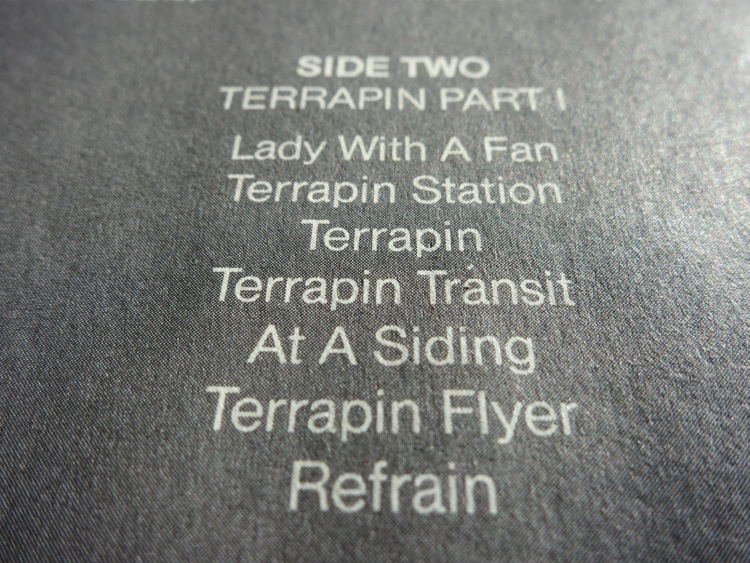

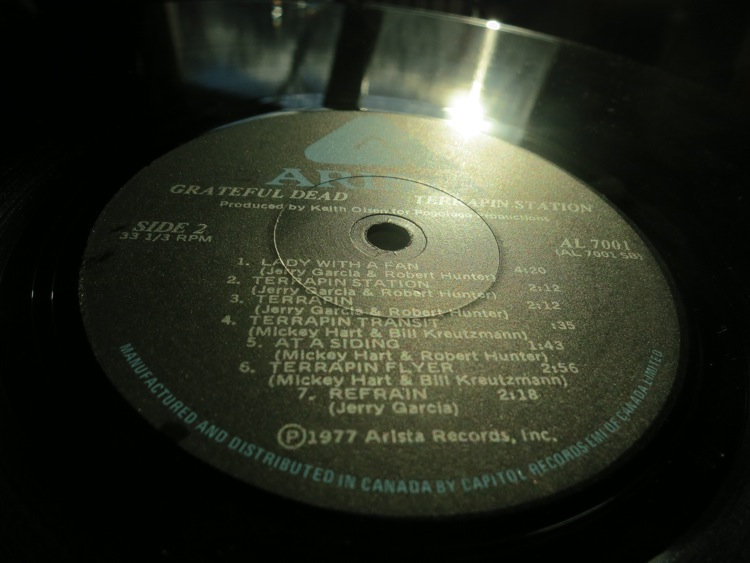
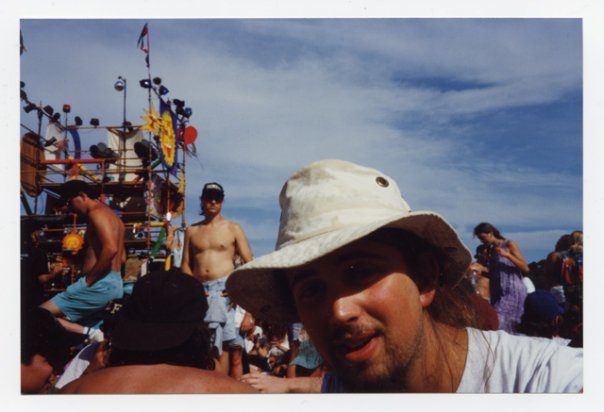



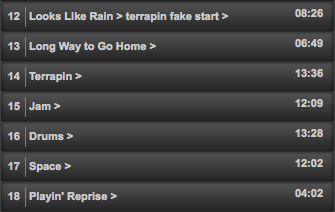
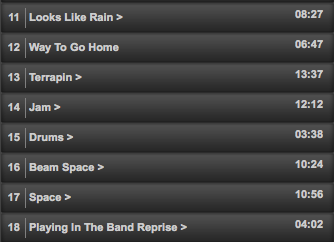
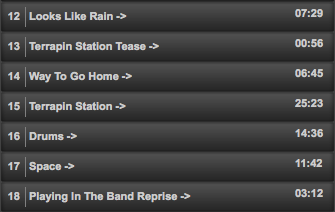
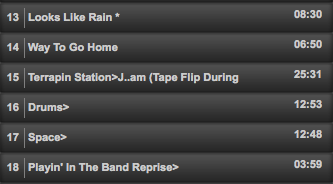
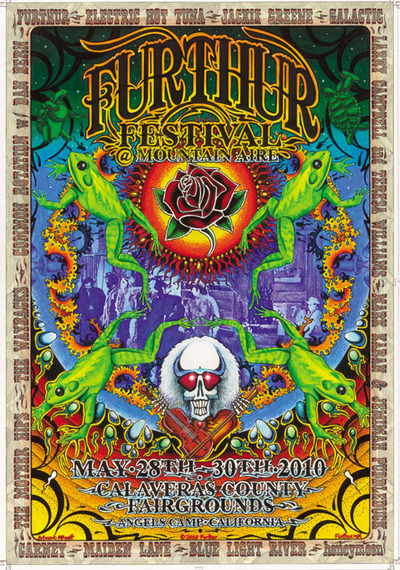
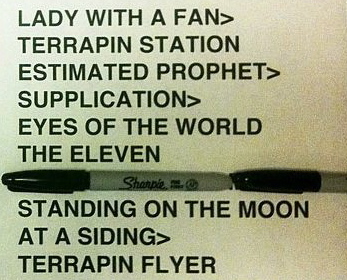
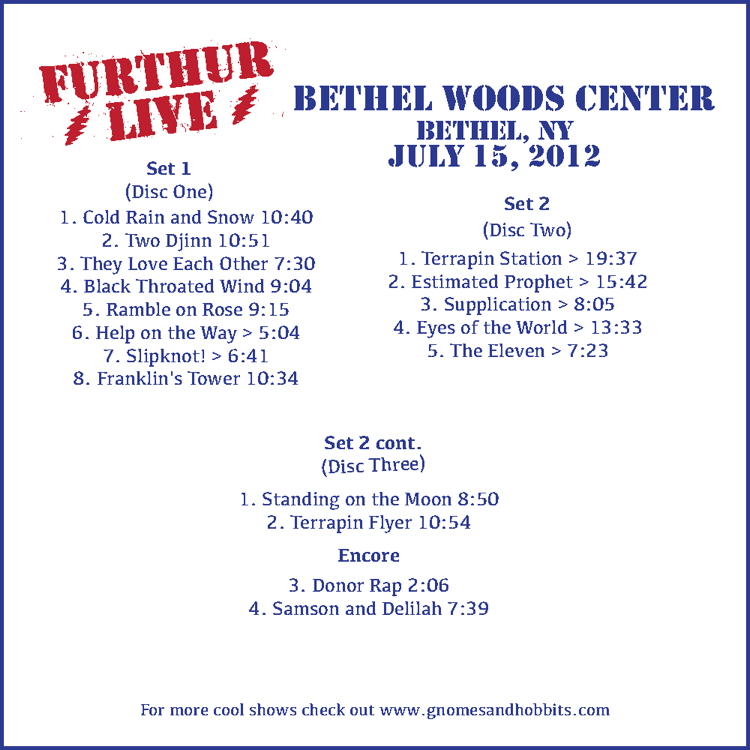

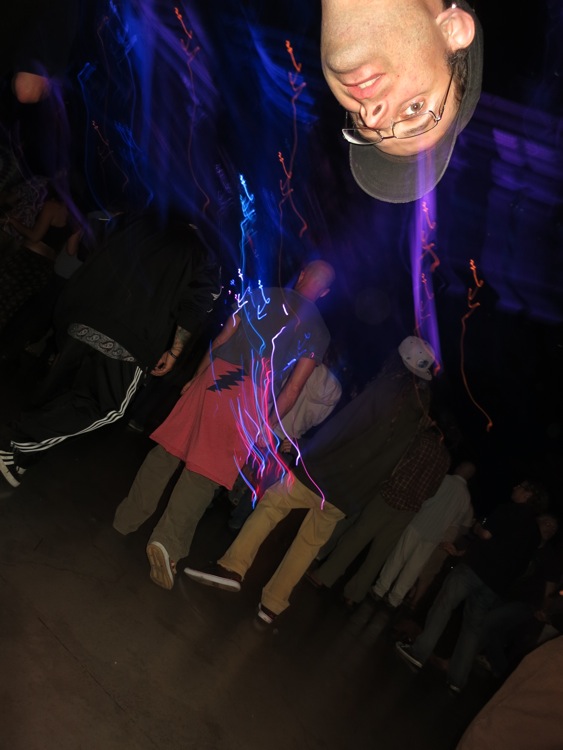
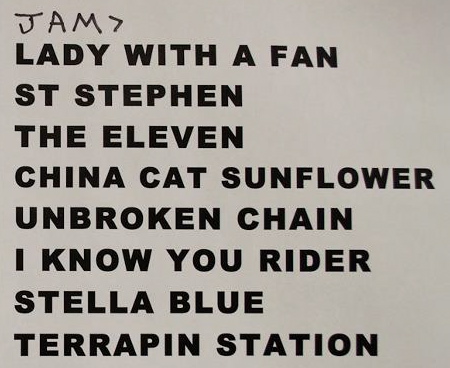
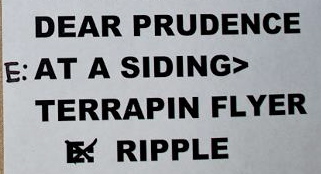

on January 19, 2013 at 12:10 pm
Permalink
Sweetwater Music Hall – 2013/01/18: First Terrapin start since NYE, emerging gracefully from a Dark Star > Morning Dew > Dark Star sandwich (@ 32:52 below). They cut out after the Terrapin section and slid beautifully into Days Between (@ 47:30). Would have been perfect filler for a Terrapin Suite sandwich, but they chose not to return to At a Siding and went into Sugar Magnolia instead. A question for future research: have they ever played two sandwiches in the same set? And will they finish the suite tonight to make their third multiple night Terrapin sandwich?
on April 15, 2013 at 8:31 am
Permalink
So they didn’t finish the suite on night 4 at Sweetwater. The setlist on the card for the official CD and download lists the start simply as Terrapin Station, just as in the old days when the Grateful Dead never played the full suite. However, the band’s on-stage setlists are often more precise about which parts of the suite they intended to play (as illustrated above). For some reason they have not posted their on-stage setlists for the Sweetwater gigs, so their level of intentionality in not finishing the suite remains obscured. They did not play a note of Terrapin during their February run in Colorado, so their record for Terrapin starts vs. finishes remains 2/0. Tonight they begin an epic run at Captiol Theatre in New York followed by a coda in Atlantic City. It’s almost certain they will make a Terrapin start at some point over the next two weeks. Where will they take it?